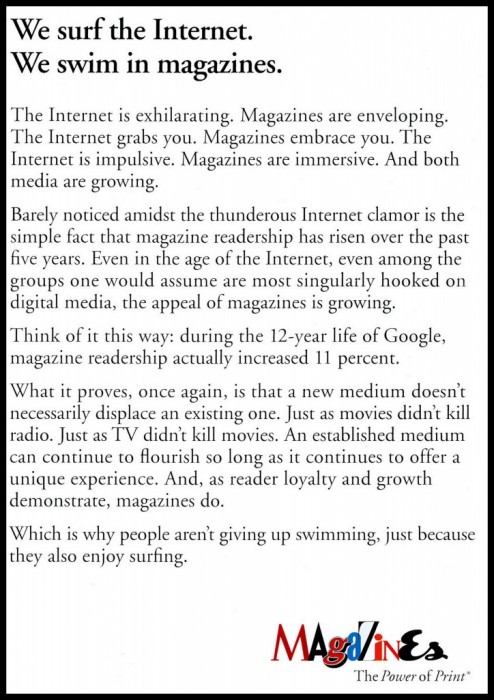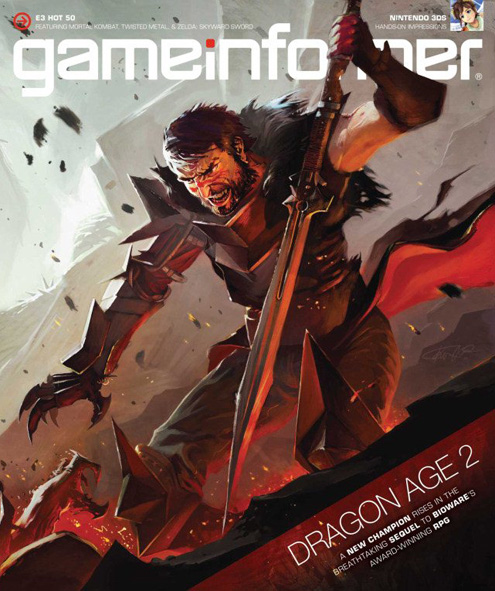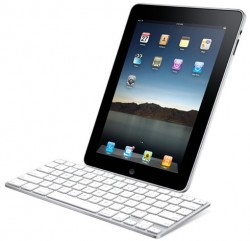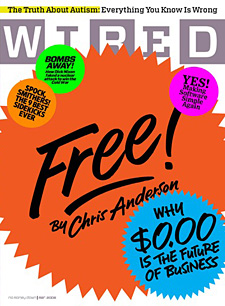
Courtesy Shutterstock
I start many of my conversations with the following: “I read an interesting article recently…” This week my twelve-year old daughter asked, “Dad, where do you read all these articles you’re talking about?”
Good question. In essence, she was asking how I stay informed and uncover a lot of interesting information and in-depth news. This is what I told her:
- I read three daily newspapers. They are: USA Today (for national news) and KSL and Daily Herald (for local news). I only scan the homepages and click on headlines that interest me. I sometimes skip weekends and weekdays on extra busy days. All told, I might spend 10-20 minutes reading these. I rarely read politics.
- I read Digg’s daily long reads. These are editor picks of some of the best long-form journalism and magazine articles on the web, from a variety of outlets. I stockpile them in several open tabs on my phone and read them throughout the week, spending a few hours doing so.
- I subscribe to weekly long read newsletters. They are the Weekly Top 5 Longreads and Longform’s Pick of The Week. Like Digg Longreads, I stockpile these and spend a few hours reading them each week.
On top of that, I read about 8-10 books a year, mostly non-fiction and biographies.
Fun fact: I used to spend a lot more time staying informed and reading dozens of websites and online newspapers in my twenties but have found since my thirties that the added distraction didn’t justify the amount of time I was spending. Since then, I’ve been a lot more productive and happy while still staying just as informed on the low-caloric, but nutrient-rich diet of the above.
Hope that helps.
 As seen in this month’s issue of Wired.
As seen in this month’s issue of Wired.
My thoughts: Agreed that information technology isn’t always replaced by newer technology (i.e. pens, pencils, paperbacks). But to suggest that printed magazines are actually thriving is a bit of stretch. My guess is the quoted “11 percent growth” stems from that fuzzy “pass along” metric magazines still use to measure audience size. (And to suggest that magazines are the superior way of reading essays is also wrong.)
Either way, stop hard-selling yourself, magazines. We know what you’re good for: Bathrooms, waiting lobbies, and other offline environments.

I have no idea.
By the looks of the cover, it seems this magazine is peddling comics, and not playable computer graphics, more commonly known as video games.
In other words, “concept art” is lame, and does absolutely nothing for me. Is it any wonder this medium is struggling?
 As this report so eloquently states, media is still best consumed with a mouse and keyboard, passive video, or with opposing hands leafing through pages of information. “Interactive media” as seen on the iPad is as useful as “multimedia CD-ROM dictionaries” from the 1990s, m’kay?
As this report so eloquently states, media is still best consumed with a mouse and keyboard, passive video, or with opposing hands leafing through pages of information. “Interactive media” as seen on the iPad is as useful as “multimedia CD-ROM dictionaries” from the 1990s, m’kay?
Now if you’re talking about entertainment, I’m all for gesture based interaction. But for straight consumption of information, give me visual ads, easy flowing editorial, and search.
Economist.com — “Pick almost any American newspaper company and you can tell a similar story. The ABC reported that for the 530 biggest dailies, average circulation in the past six months was 3.6% lower than in the same period a year earlier; for Sunday papers, it was 4.6% lower. Ad revenues are plunging across the board…”
Fact: many technologists were quick to predict the death of pen and paper with the rise of typewriters and personal computers. Similarly, many technologists predicted book sales would decrease with the rise of e-book readers.
That being said, older technology can often persist in light of new technology through adaptation (i.e. new technology does not always obviate older technology). I believe the same is true for newspapers and magazines, provided they accentuate their remaining value (portable text, reputation, local community, and/or more non-ephemeral reporting like features).
[via Digg]
 I just got done reading Chris Anderson’s 6,000 word preview for his upcoming book Free! Why $0.00 Is the Future of Business. In short, the article examines cross-subsidies (read: giving away razors to sell razor blades) as they pertain to the web products and their near-zero operating costs. You can have a free lunch so long as someone else picks up the tab, maintains Anderson.
I just got done reading Chris Anderson’s 6,000 word preview for his upcoming book Free! Why $0.00 Is the Future of Business. In short, the article examines cross-subsidies (read: giving away razors to sell razor blades) as they pertain to the web products and their near-zero operating costs. You can have a free lunch so long as someone else picks up the tab, maintains Anderson.
While the article was informative, I don’t think the strategy of giving is “the future of business,” rather it’s an effective marketing tool for select web companies — not everyone, and especially not for offline ventures. Still, Anderson presents some compelling evidence that “free” will become more ubiquitous than I currently believe.
Ironically, and in an effort to deflect the “wait a minute, your product isn’t free” criticism, Wired is offering up to 10,000 copies of its March 2008 issue at not cost to you (a fraction of the 500,000+ issues the publisher sells every month, mind you). Not quite what I’d call “practice what you preach,” but then again, I don’t think Anderson’s article endorses the demise of direct sales altogether, even if his headline does.
Connect Magazine has a fairly new ad campaign aimed at soliciting user-generated feedback from its readers. The campaign shows close-ups of several individuals (some prominent) with the quoted text, “I’m Editor-in-Chief,” suggesting that anyone can make recommendations for improvement. That’s a good thing. So it is in this public forum and with the utmost respect that I offer the following two suggestions after reading the first article from the magazine’s January issue (Nota bene: The online version only contains half of the print formatting problems I’ll discuss below):
-
Reference yourself as a proper noun. As you’ll see on both the online and print versions of Connect Magazine, the publication always references itself in-paragraph as “connect” sans capitalizing the “c” despite their being a proper noun. The reason — I suspect — is because the publication uses all lowercase letters in their logotype like several other companies do including my own. But the war waged against uppercase proper nouns in writing will never be won. Rather, the attempt in creating an exception to the rule is confusing to readers, and frankly, looks amateurish; like something a brash mom-and-pop shop would do shortly after creating their first company name. People don’t expect proper English on a creative logo, but they do expect it when reading copy. So ditch the lowercase “c” at the paragraph level if you want to mitigate confusion.
-
Quit changing the font type, its size, or its color in-paragraph. In paper form, Connect now uses a bright orange (its corporate color) when referencing itself or its URL in addition to snubbing conventional proper nouns. It also appears that they change the font type and its size a bit. This issue is largely more problematic that the first. It significantly reduces the readability by disrupting text continuity. The overall reading experience feels like that of driving your car over those annoying speed bumps in front of elementary schools. I’m betting the magazine did this in a vane attempt to combat the reader confusion cited above, which — if accurately assumed — would be ridiculous. And no, just because online articles can get away with colored hyperlinking doesn’t mean you can in print form. You’re a magazine not a website!
The above two suggestions are sure to increase the professionalism, usability, and most importantly, the readability of an already excellent publication. After all, Connect sells reading material for a living. They’d be wise not to alienate that experience for creativity’s sake or ambitious differentiation.
Disclosure: I write for Connect.


 As seen in this month’s issue of Wired.
As seen in this month’s issue of Wired. 
 As
As  I just got done reading Chris Anderson’s 6,000 word preview for his upcoming book
I just got done reading Chris Anderson’s 6,000 word preview for his upcoming book